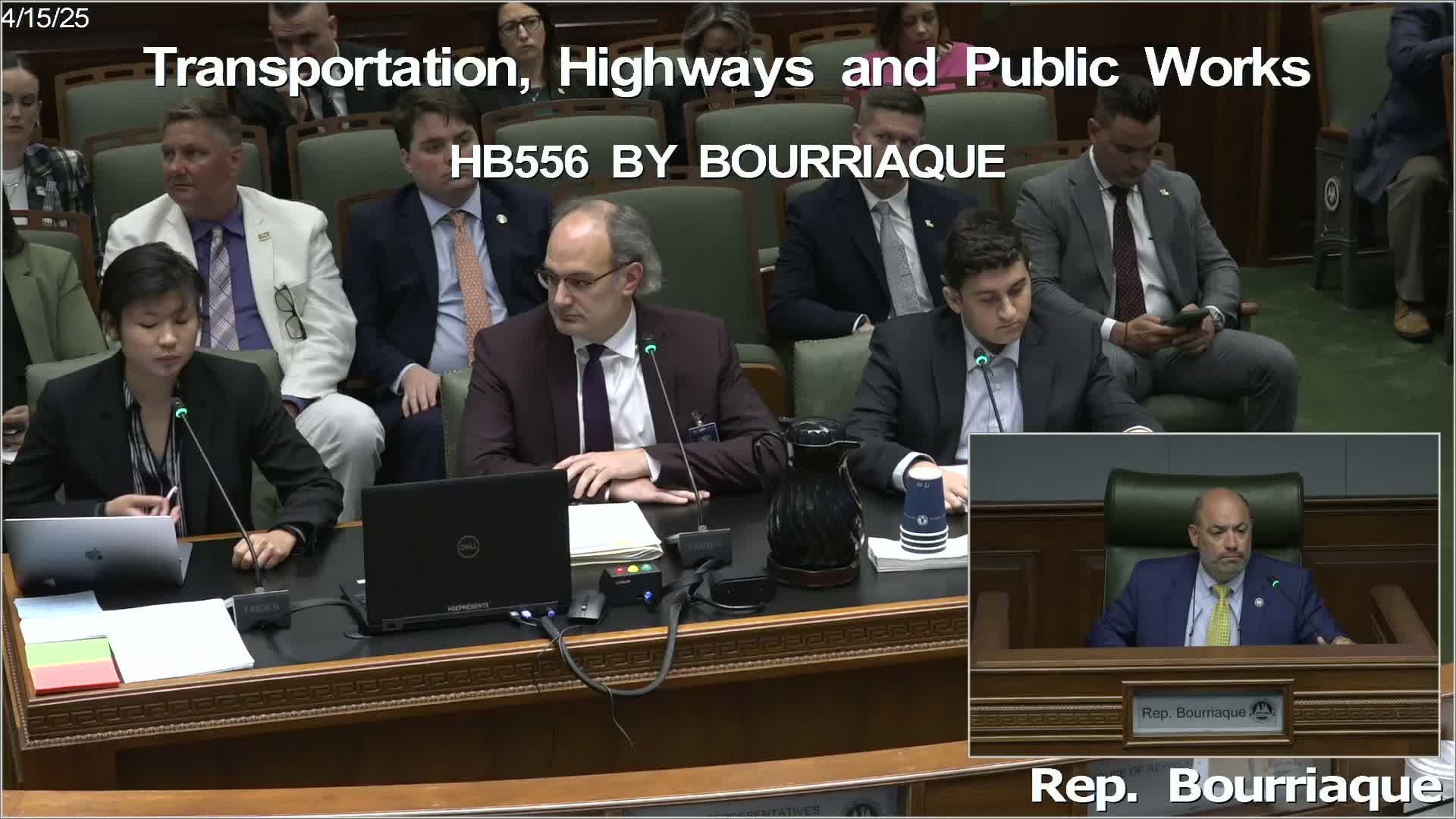Research group tells committee Louisiana road design, urban sprawl help explain high pedestrian and cyclist fatality rates
April 15, 2025 | 2025 Legislature LA, Louisiana
This article was created by AI summarizing key points discussed. AI makes mistakes, so for full details and context, please refer to the video of the full meeting. Please report any errors so we can fix them. Report an error »

A three-person delegation from Louisiana Progress told the House Transportation Committee that the state's road design and urban form contribute to higher rates of pedestrian and cyclist fatalities and higher auto insurance costs.
Presenters Marilee Montgomery, Peter Robbins Brown and Eli Levinson summarized research comparing Louisiana to neighboring states and comparing ZIP-code-level data inside Louisiana. "Louisiana actually ranks third in the country for pedestrian fatality rates per a hundred thousand people," Eli Levinson said, and the presenters said cyclist fatality rates in Louisiana are notably higher than in nearby states.
Main findings and suggestions
- Density and sprawl: The presenters said Louisiana’s cities are, on average, more sprawling and less dense, increasing vehicle miles traveled inside urban areas and exposure to crashes.
- Walkability: The group reported that lower walkability in many Louisiana urban areas explained a substantial share of variation in insurance premiums across cities — their model accounted for roughly 38–39% of the variation they examined.
- Truck traffic: Louisiana’s high truck traffic (driven by busy ports) also makes the state an outlier compared with peers and can worsen collision risks.
Recommended engineering and policy solutions
Louisiana Progress urged the committee and DOTD to consider near-term, cost-effective safety investments, including more roundabouts, additional street lighting, road diets (lane rechannelization), dedicated truck routing where feasible and targeted safety improvements on urban corridors.
Quotations
- "Louisiana actually ranks third in the country for pedestrian fatality rates per a hundred thousand people," said Eli Levinson, one of the presenters.
- "When you put all of that together, that accounts for 38 to 39% of the variation in insurance premiums across Louisiana's urban areas," Marilee Montgomery said, summarizing their cross‑city model.
Follow-up and context
The presenters asked the committee to prioritize safety-oriented projects as part of broader DOTD reforms and said targeted, relatively low‑cost engineering changes can reduce both fatalities and insurance pressure. Committee members acknowledged the presentation and listed it among several inputs to be considered while drafting DOTD reforms and performance metrics.
Ending
Committee members said the research will be useful as they sort priorities for the department’s new project-delivery and transformation offices and as they weigh short-term safety projects against long-term backlog reductions.
Presenters Marilee Montgomery, Peter Robbins Brown and Eli Levinson summarized research comparing Louisiana to neighboring states and comparing ZIP-code-level data inside Louisiana. "Louisiana actually ranks third in the country for pedestrian fatality rates per a hundred thousand people," Eli Levinson said, and the presenters said cyclist fatality rates in Louisiana are notably higher than in nearby states.
Main findings and suggestions
- Density and sprawl: The presenters said Louisiana’s cities are, on average, more sprawling and less dense, increasing vehicle miles traveled inside urban areas and exposure to crashes.
- Walkability: The group reported that lower walkability in many Louisiana urban areas explained a substantial share of variation in insurance premiums across cities — their model accounted for roughly 38–39% of the variation they examined.
- Truck traffic: Louisiana’s high truck traffic (driven by busy ports) also makes the state an outlier compared with peers and can worsen collision risks.
Recommended engineering and policy solutions
Louisiana Progress urged the committee and DOTD to consider near-term, cost-effective safety investments, including more roundabouts, additional street lighting, road diets (lane rechannelization), dedicated truck routing where feasible and targeted safety improvements on urban corridors.
Quotations
- "Louisiana actually ranks third in the country for pedestrian fatality rates per a hundred thousand people," said Eli Levinson, one of the presenters.
- "When you put all of that together, that accounts for 38 to 39% of the variation in insurance premiums across Louisiana's urban areas," Marilee Montgomery said, summarizing their cross‑city model.
Follow-up and context
The presenters asked the committee to prioritize safety-oriented projects as part of broader DOTD reforms and said targeted, relatively low‑cost engineering changes can reduce both fatalities and insurance pressure. Committee members acknowledged the presentation and listed it among several inputs to be considered while drafting DOTD reforms and performance metrics.
Ending
Committee members said the research will be useful as they sort priorities for the department’s new project-delivery and transformation offices and as they weigh short-term safety projects against long-term backlog reductions.
View full meeting
This article is based on a recent meeting—watch the full video and explore the complete transcript for deeper insights into the discussion.
View full meeting
